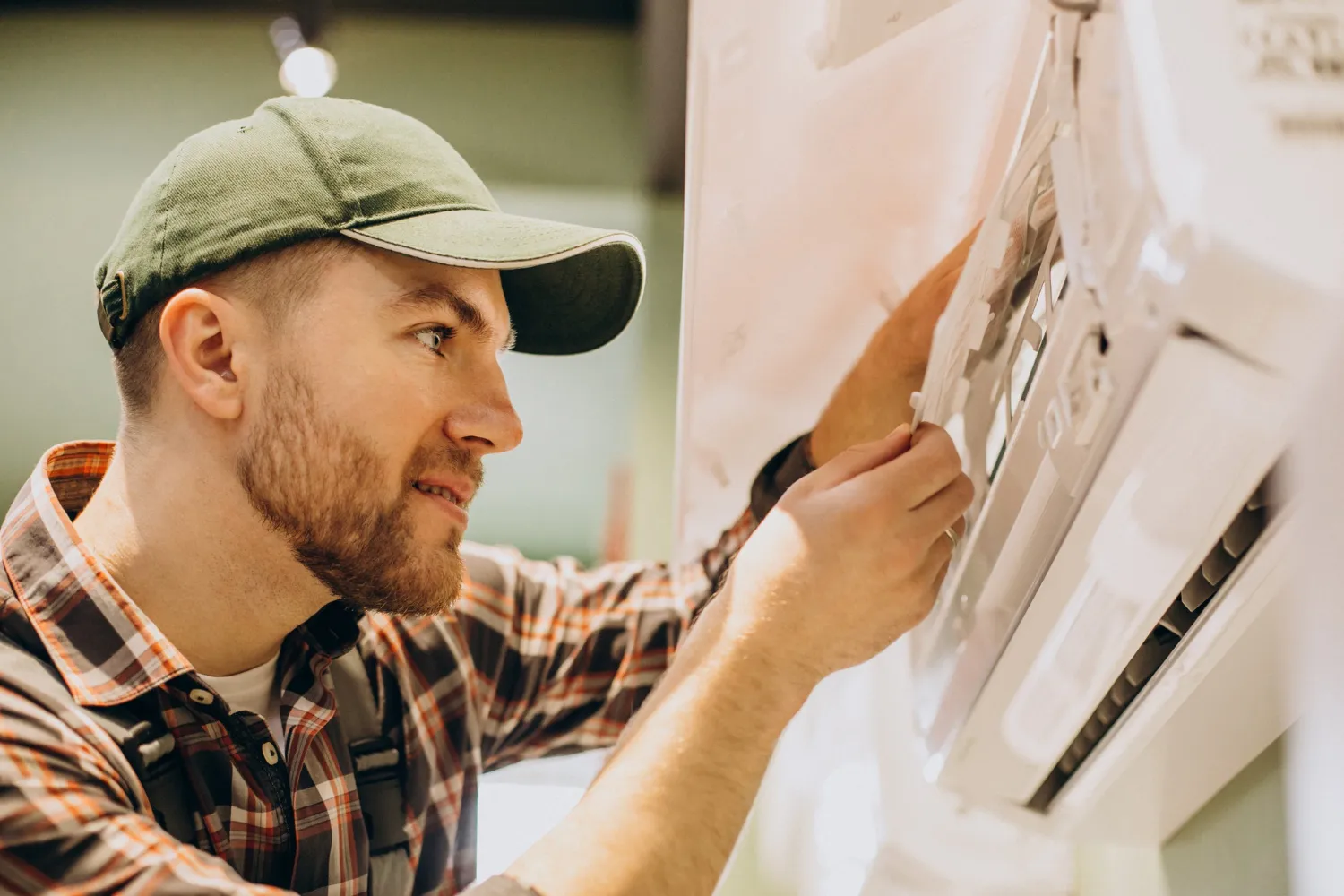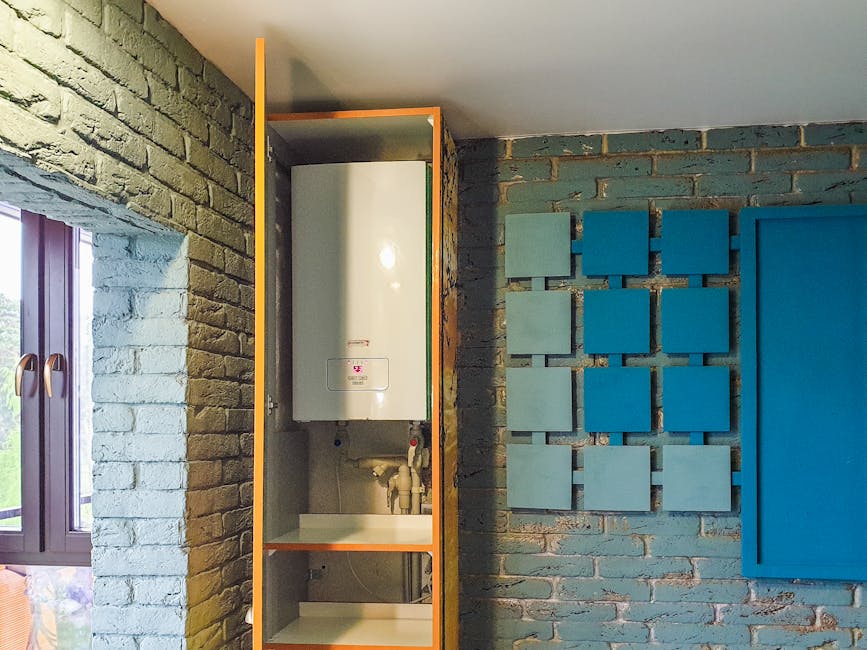Menu
Are you tired of feeling too hot or cold in your home? Discover your HVAC system's 8 most crucial components that keep your indoor environment just right.

To keep your house comfortable all year long, your heating, ventilation, and air conditioning (HVAC) system has to be appropriately maintained. Knowing the parts of your HVAC system can enable you to keep it more cheaply and effectively.
Schedule pre-season maintenance checks for your HVAC system twice yearly to prevent unneeded, inconvenient, and sometimes costly failures.
1. Heat Exchanger
When your thermostat turns on the furnace, the heat exchanger, a component of the furnace housing, begins to operate, and combustion causes heat to increase. It takes in the heat, warms the chilly air, and then pumps the hot air into your house through vents and ducts.
Heat exchangers are essential parts of gas, oil, and wood furnaces. They are comprised of temperature-resistant alloys and solid stainless steel to avoid cracks. Carbon monoxide leakage from defective heat exchangers in gas and wood furnaces may result in headaches, nausea, unconsciousness, and even death.
We advise installing commercial detectors in the bedrooms and kitchens of any house with a gas or wood-burning heater or fireplace since carbon monoxide has no smell or color.
2. Blower Motor
The blower motor-driven fan forces warm air from the heat exchanger into your house via ducts and vents. The variable-speed motor keeps on blowing until all of the warm air in your house's heat exchanger, chimneys, and rooms has been distributed.
The blower then turns off until the next heating cycle. The variable-speed motor operates at various daily speeds to improve efficiency and save heating costs.
3. Combustion Chamber
Your furnace's combustion chamber, also known as the burner, is where the fuel and air are mixed. When a gas-fueled pilot light or electronic ignition "glow stick" ignites a small amount of gas and philosophy that have just entered the combustion chamber in a gas furnace, the heating cycle starts.
A second combustion chamber is sometimes included in high-efficiency gas furnaces so that carbon monoxide and unburned fuel can be captured and compressed before igniting.
4. Condenser Coil or Compressor
Often positioned outdoors, the condenser coil or compressor cools your house by dissipating heat into the outside air. Thus, it is an essential HVAC component for air cooling. Refrigerant is compressed and condensed when air is blown over the liquid to cool and disperse heat.
Your HVAC system transports cooled liquid refrigerant to the evaporator coil via copper or aluminum tubing. Keep dirt, grass clippings, leaves, and other debris away from your condenser/compressor to save energy and avoid issues. Please turn off the unit's electricity once a year and give it a good garden hose wash.
5. Evaporator Coil
Each heat pump or air conditioner relies on its evaporator coil. A valve controls the flow of liquid refrigerant, which subsequently transforms into vapor to absorb heat and reduce the temperature in your house.
During the warmer months, the fan in your HVAC system cools the evaporator by blowing warm air from inside your house via return ducts. The cooled air is then sent throughout your home through ducts.
To keep your house cold and cozy, this procedure is repeated often. Moreover, condensation formed when warm air passes over an excellent evaporator coil reduces the humidity in your home.
Heat pumps reverse the heat transfer process in the winter to eliminate the cold air. Heat may dry the air and irritate the skin, eyes, and nasal passages. Many individuals use a humidifier to provide moisture to their home's warm air to prevent this.
Condensation from the evaporator attracts dirt and dust and may promote mold formation on the coil. Even in the summer, refrigerant leaks may cause ice to accumulate on the ring.
Any of these issues may decrease the air quality within your home and reduce the effectiveness of heat transmission. A costly breakdown may result from airflow blockages if accumulation persists unchecked.
6. Thermostat
You may regulate when the HVAC system turns on and off using the thermostat's user controls and temperature sensors. The thermostat, which is wired directly into your system, is ideally placed in the middle of your house, away from drafts, and it shouldn't be exposed to direct sunlight at any time of day.
Some HVAC systems have many thermostats installed around the house, each regulating a specific area or "zone." Simply heating or cooling occupied spaces may help conserve electricity. Also, it aids in accommodating varying degrees of thermal comfort.
The temperature may be changed automatically using programmable thermostats under a predetermined schedule or routine, such as while you are at home vs. away at work or on vacation, or at a different temperature at night than during the day.
7. Ductwork
Ductwork refers to the network of tubes within your walls and ceiling that transport warm and cooled air throughout your house. While also made of steel, plastic, fiberglass, cloth, and polyurethane, ductwork is often made of aluminum.
8. Vents
Vents in your HVAC system automatically expel air from your ducting, making them the most noticeable components. These may be manually changed to change the direction of the airflow, reduce its force, or completely turn off the airflow to a specific space. They should be cleaned often to keep them clean and free of dust and grime.
Understanding the 8 most important parts of your HVAC system - the thermostat, furnace, heat exchanger, evaporator coil, condensing unit, refrigerant lines, ductwork, and vents - is crucial for optimal performance and energy efficiency. These components work synergistically to regulate temperature, maintain indoor air quality, and provide comfort in your home or office.
Familiarizing yourself with their functions can help you identify potential issues, schedule timely maintenance, and ensure the longevity of your HVAC system. By prioritizing the care and upkeep of these essential components, you can enjoy a comfortable, energy-efficient living or working environment for years to come.
Say goodbye to temperature fluctuations and hello to consistent comfort - let our experts inspect the 8 most important parts of your HVAC system.




.png)

